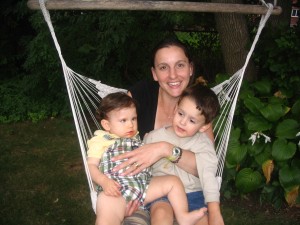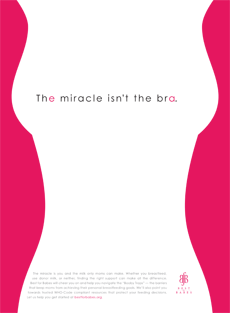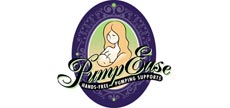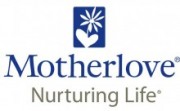We found out about the CHASE Community Giving Contest from our friend Ingrid Harding, founder of Girl Power 2 Cure, an organization that raises awareness and research funds for Rett Syndrome, a severe developmental disorder affecting primarily girls, caused by a gene mutation and frequently misdiagnosed as the most severe type of autism. Girl Power 2 Cure also engages girls in caring for their girlfriends with Rett Syndrome-how awesome is that? I asked Ingrid to share her story because she is my hero and she inspires me every day. I don’t know if I would have continued breastfeeding if my baby had arched her back and rejected the breast (and me). If my child was diagnosed with Rett at age 4 I am not sure I would have the strength to carry on, day after day. Every 90 minutes, another girl is born with Rett.
Thank you Ingrid, for urging us to enter the CHASE Community Giving Contest, for sharing your and Sarah’s amazing story, and for being willing to speak openly about breastfeeding. We need more disease foundations looking for a cure to acknowledge the incredible power and benefits of breastfeeding, and encourage expecting and new parents to breastfeed or use donor milk, in their list of ways to prevent or ameliorate disease, as they already do with exercise and eating healthy! Every day we hear the messages of cancer, heart disease, and diabetes foundations, on the news, in the cause-related marketing products we buy, in the races we run and walk. Imagine if all of those foundations’ messages even had a small but consist statement supporting breastfeeding in a non-judgmental way; not only would they be helping their own cause but they would help to normalize breastfeeding and ensure that the 360 degree world surrounding expecting parents reflected the importance of making healthy decisions starting with birth.
If you haven’t already, please go to Facebook.com and vote for Best for Babes and for Girl Power 2 Cure - two of very few organizations in the contest that are women’s causes!
Ingrid Harding’s Story, Founder of Girl Power 2 Cure
Recently I’ve started to think of our bodies as trekkers, endlessly pushing forward step by step, in a powerful rhythm. We all carry different loads.
My daughter, Sarah (age 9), was diagnosed with Rett Syndrome at the age of four. Her load is heavy. She lost the ability to walk, speak or even use her hands…. yet her core is still pushing forward in its own powerful rhythm.
Would I ask her to also carry a pack of cement bricks? Maybe tie a log to her ankle? Throw a pot of water up on her head? No. I need to lighten her load. Protect her. Give her every chance in the world to use what is working to stay alive, to keep pushing forward and staying strong.
Even before she was born, I had thoughts like this. Even though my body seemed to tolerate a lot, why ask my baby to? Why not keep the load light for her?
There are many things we do to keep Sarah’s load light. Most important is her diet. We stay away from things that are difficult to digest, like gluten and dairy, and potential allergens, like nuts. We also avoid food dyes and artificial ingredients – all things healthier bodies could process . . . but at what cost to our overall health? We have a whole-house water filtration system, to reduce the burden of chemicals in the water used to bathe Sarah, and in the water she drinks. We do our best to eliminate all toxins, even those that she could process, but at the expense of moving forward with her powerful rhythm.
I am so thankful I chose to breast feed Sarah. She nursed exclusively for five months. Even though I had no idea what troubles would soon come her way and breast feeding was not going to stop it, I can look back and know that I gave her a strong start. Breastfeeding was not easy . . . looking back now I can see what may have been early signs of Rett Syndrome . . . and I am so glad that despite the breastfeeding obstacles we faced, that I did not throw in the towel in the first few weeks. I believe it made a difference in Sarah’s connection to us, and her immune system strength. It was the beginning of keeping her load light so she could achieve her potential despite Rett Syndrome.
You see, when you can’t talk and explain what ails you, you scream and cry… a lot. We learned very quickly that digestion / pain / immune strength were all interrelated. It’s like an on/off switch with Sarah. Quiet for good digestion. Scream for bad. That in turn could lead to pain which would lead to lower immune function.
Sarah is strong for a girl with Rett Syndrome . . . a strength she will need to hold out for the cure (see below). I can’t say with absolute certainty that our light load is the reason why, but I wouldn’t trade our path on this trek for any other!
More about Rett Syndrome:
Another little girl is born with Rett Syndrome every 90 minutes. It is the leading genetic cause of severe impairment in females, yet so few women know about it.
It strikes at random. Any expectant mother is at risk for having a daughter with Rett Syndrome. The girls and women have symptoms of every neurological disorder for their entire lives. Most girls cannot walk, talk or use their hands. They are mentally aware, yet trapped inside dysfunctional bodies.
The good news: in 2007, researchers were able to REVERSE the symptoms in mice, making Rett Syndrome potentially the first curable neurological disorder. With enough funding, we may see a cure within 5 years.
Imagine that it could be a women’s disorder, Rett Syndrome, that will pave the way and shed light on dozens of other disorders bringing us closer to a cure for things like Parkinsons, Alzheimers and Epilepsy.
Do you have a child with Rett Syndrome? Did you struggle with breastfeeding a baby with severe developmental disorders? We’d love to hear your story!!




 @BestforBabes
@BestforBabes Best For Babes
Best For Babes






